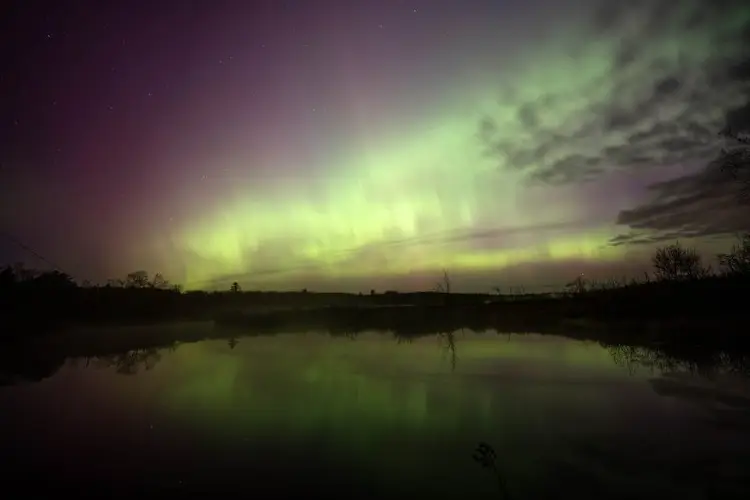WFXRtv

People all across the country have been treated to some truly amazing sights in the sky, including a total solar eclipse, the reemergence of the "devil comet," and several nights illuminated by the northern lights. And now, there's a possibility that we may witness a rare and spectacular event that will introduce a "new" star to the night sky for the first time in about 80 years.

There is a high possibility that we will have the opportunity to witness the breathtaking natural phenomenon of the northern lights once more this summer.
In May, there were solar storms powerful enough to push the northern lights to places like Florida and Hawaii, where the aurora is not often visible.
Although the northern lights have been scarce in many parts of the United States lately, there is potential for that to shift in the near future.
The Science Behind Northern Lights
Solar storms, such as solar flares and coronal mass ejections, are responsible for creating the northern lights. CMEs are explosions of plasma and magnetic material that are ejected from the sun into space.

When the material moves in a specific path, it can meet Earth's magnetic field, which causes particles to move towards the North and South Poles. As these particles mix with the gases in our atmosphere, they produce extra energy that results in colorful lights in the sky called auroras.
The distance the northern lights can be seen in the U.S. depends on how powerful the geomagnetic storms are - the stronger the storms, the more south the aurora can be spotted.
What Is Causing The Recent Uptick In Northern Lights Activity?
The increased auroras we've been witnessing are mainly a result of our current position in Solar Cycle 25. As the sun goes through its cycles, it also changes its poles. When it reaches the peak of a cycle, the sun becomes much more active.

At the beginning of this year, scientists found the biggest solar flare in a long time. They have also reported other flares since then. One of those was an M9.3 flare on June 23 in the same area where there have been six X-class flares (flares are rated in four classes, from B to C, M, and finally, X). Sadly, this flare was not predicted to cause the aurora to appear in the United States.
The most exciting part is that it appears we haven't even reached the highest point of Solar Cycle 25 yet.
Mark Miesch, a researcher from NOAA's Space Weather Prediction Center, believes that we may still be a few months away from reaching the peak of solar activity. Solar maximum is typically defined as the time when we observe the highest number of sunspots or the greatest amount of energy from certain radio waves.

On the other hand, Miesch sees solar maximum as a time when there is increased activity.
He compared it to the hurricane season of space weather. According to him, solar maximum can last for around 2 years or longer. If we define it this way, then we are currently experiencing solar maximum and it is expected to continue until the end of 2024 and possibly into 2025.
Expecting More Northern Lights Soon?
As per Miesch, there are predictions of an increase in powerful solar storms for the remainder of this year, continuing into 2025 and possibly extending into 2026.

Even though the SWPC and scientists worldwide monitor the sun closely and attempt to forecast how its activity might affect us, it can be challenging to predict when CMEs will reach Earth. It is only when CMEs are less than 1 million miles away from our planet that it becomes somewhat easier to predict, but at that point, we only have 15 to 45 minutes of lead time.
If the forecasts hold true, and the high solar activity persists in the upcoming months, it is possible that some people in America will be able to witness the aurora borealis once more. Whether or not the lights will be visible in Florida and Hawaii remains uncertain, so keep checking for updates.






























































